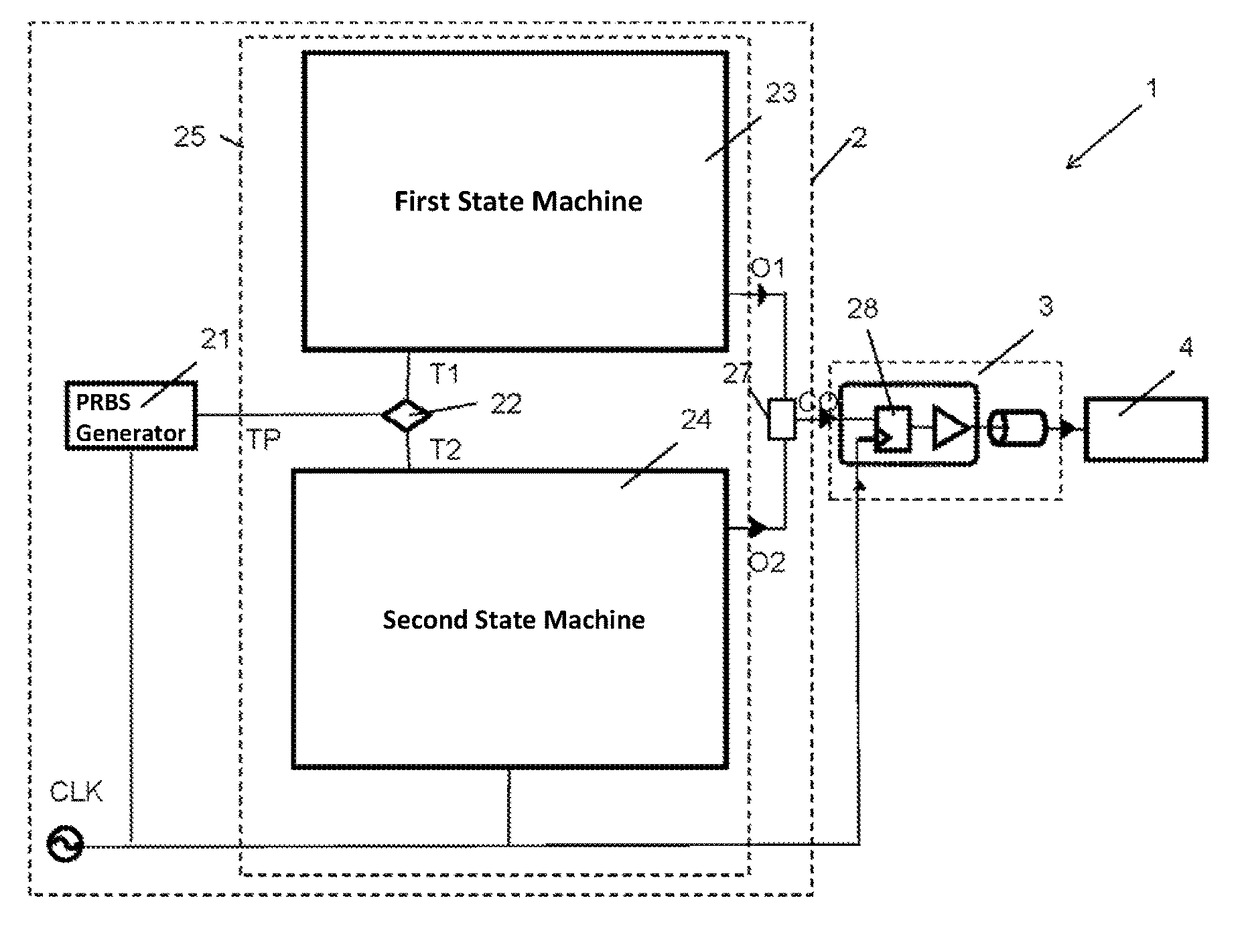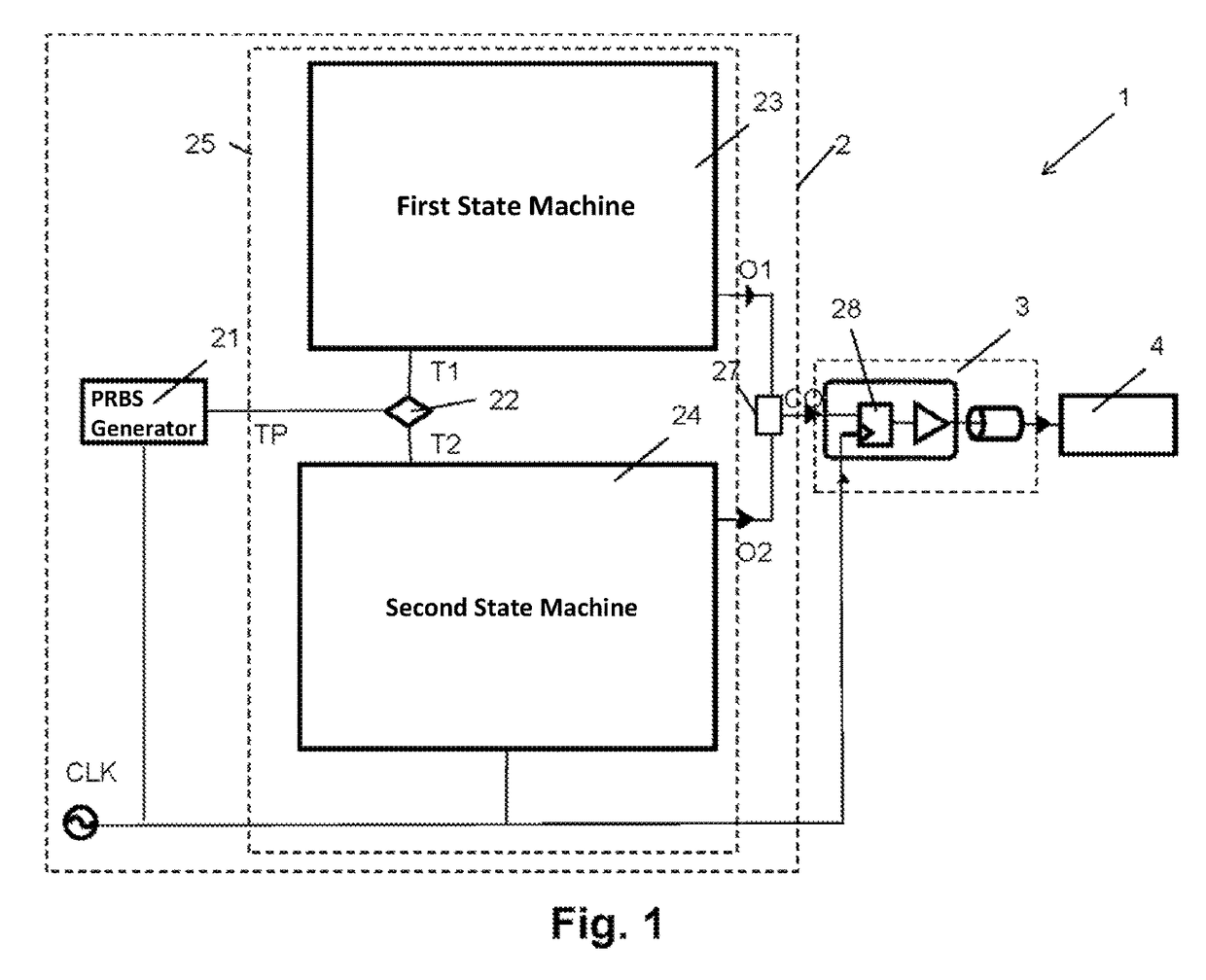Method and apparatus for generating a multi-level pseudo-random test signal
a multi-level pseudo-random test and generator technology, applied in the direction of digital transmission, instruments, wireless communication, etc., can solve the problems of inability to provide multi-level signaling, difficult to test multi-level i/os of devices, and symbols generated by assigning subsets of bits to multi-level symbols no longer uniformly distributed
- Summary
- Abstract
- Description
- Claims
- Application Information
AI Technical Summary
Benefits of technology
Problems solved by technology
Method used
Image
Examples
Embodiment Construction
[0036]The process of generating a multilevel pseudo random test signal is described now in conjunction with the test system of FIG. 1 and the method as illustrated by the flow chart of FIG. 3.
[0037]Referring to FIG. 1, a test system 1 is illustrated having a test symbol generator 2, a transmission channel 3 and a checking unit 4 to evaluate the transmitted test signal.
[0038]The test signal generator 2 comprises a standard binary NRZ (non-return to zero) PRBS (pseudo-random bit signal) generator 21 which outputs a serial sequence of a binary test pattern TP. The PRBS generator 21 is clocked by a clock signal CLK having a base frequency f0.
[0039]The pseudo-random bit sequence TP generated by the PRBS generator 21 is supplied to a bit tester 22 of a mapping unit 25. The bit tester 22 provides a first trigger signal T1 and a second trigger signal T2 for each clock cycle. The first trigger signal T1 corresponds to a sequence of signal pulses which may, e.g., be edge controlled by the clo...
PUM
 Login to View More
Login to View More Abstract
Description
Claims
Application Information
 Login to View More
Login to View More - R&D
- Intellectual Property
- Life Sciences
- Materials
- Tech Scout
- Unparalleled Data Quality
- Higher Quality Content
- 60% Fewer Hallucinations
Browse by: Latest US Patents, China's latest patents, Technical Efficacy Thesaurus, Application Domain, Technology Topic, Popular Technical Reports.
© 2025 PatSnap. All rights reserved.Legal|Privacy policy|Modern Slavery Act Transparency Statement|Sitemap|About US| Contact US: help@patsnap.com



